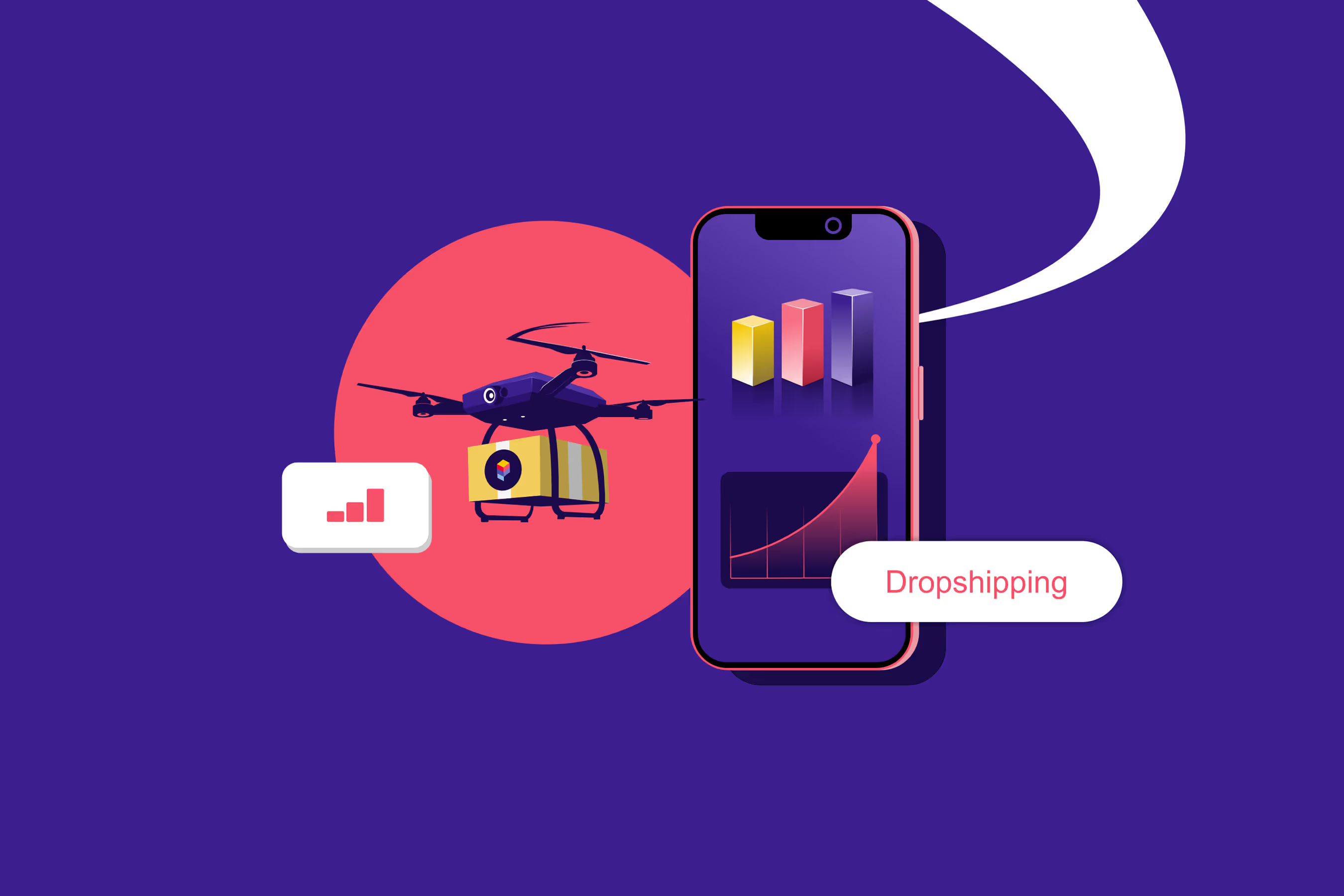Numbers don’t build a business, but they help make smarter decisions.
In dropshipping, where trends shift fast, statistics can mean the difference between growing and getting stuck. Whether you’re selling print-on-demand apparel or trending gadgets, the numbers behind the scenes matter.
How big is the market now? What niches lead? Are most dropshippers actually making money?
These aren’t just fun dropshipping facts - they shape strategies. If you’re planning to start or grow your store, you need to stay updated on key dropshipping statistics. It’ll help you spot trends and make smarter choices.
So, before you design, launch, or scale, let’s look at the current dropshipping statistics.
What Is Dropshipping?
Dropshipping is a way to run a business without storing products. You sell items on your website, but a supplier keeps the stock and ships the orders for you.
You don’t need a warehouse or storage space. You also avoid big upfront costs. Since you never handle the products yourself, it’s a low-risk option. That’s why many new business owners and creators with low budgets choose it.
Dropshipping works really well with print-on-demand. In this setup, you focus on the brand, design, and customer experience. The supplier handles printing and delivery after each order.
Here’s the difference: Print-on-demand makes custom items only after someone places an order. Regular dropshipping sells products from a supplier’s ready-made catalog.
Dropshipping is a great choice if you want to start a part-time business. With the right niche and a smart plan, it can make good money.
Also Read:
Now, here are 15+ statistics about dropshipping worth knowing:
1. Dropshipping Market Size
.avif)
The global dropshipping market size reached $365.67 billion in 2024, according to Grand View Research. Experts say it could grow to $1.25 trillion by 2030. This represents a remarkable 22% compound annual growth rate.
Dropshipping is growing fast. This is because more people shop online, shipping is faster, and digital payments are easier.
North America makes up about 33% of the total market. But other regions are growing too—especially where mobile shopping and global delivery work well.
Here’s what this means for you as a seller:
- Start now to grow your brand before the market gets crowded.
- Start a print-on-demand store with fast shipping to meet local demand and save money.
- Be clear about shipping and returns to build customer trust.
- Make sure your store works well on phones. It should be fast and easy to use.
2. Dropshipping for Order Fulfillment
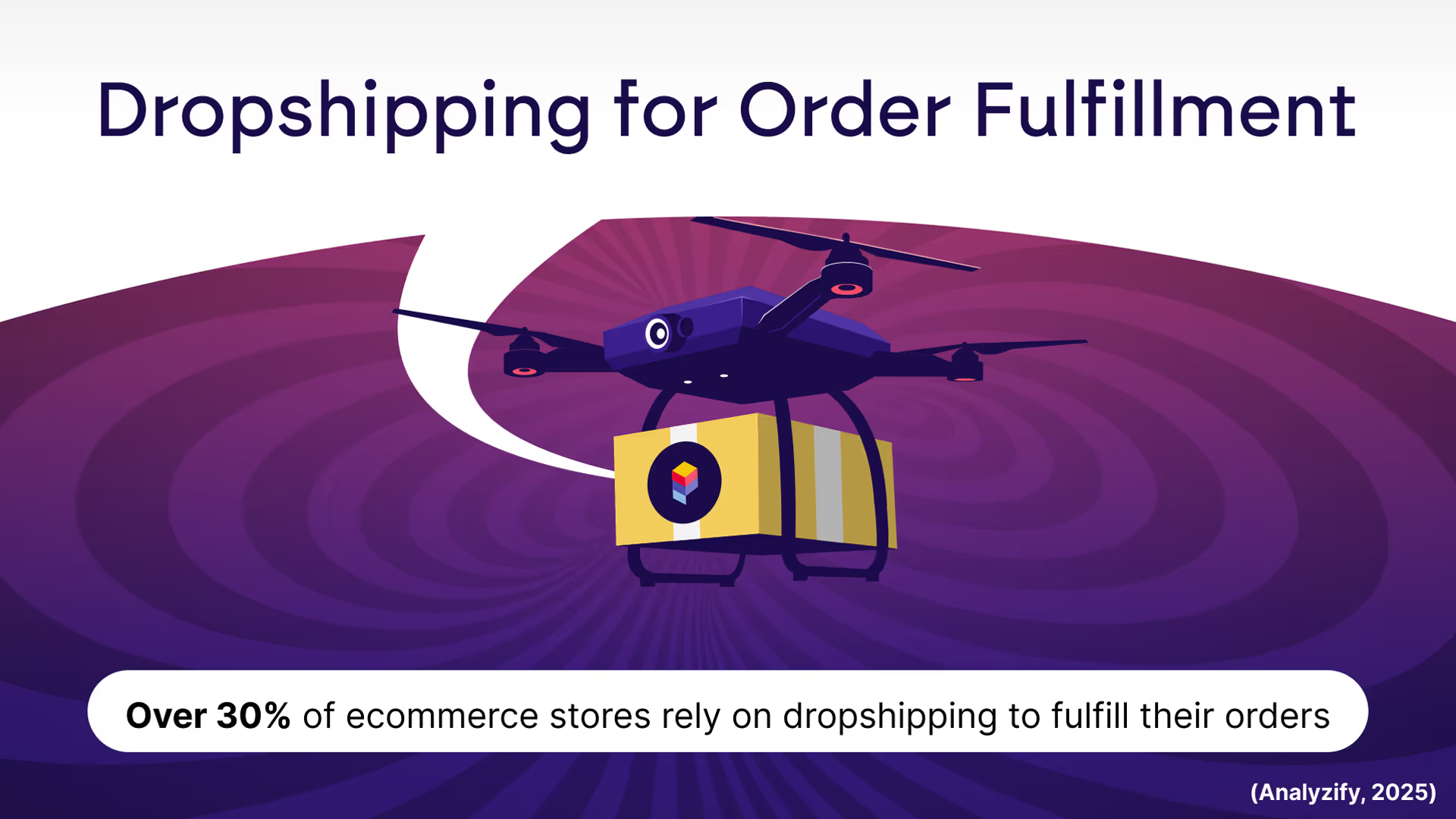
According to Analyzify’s 2025 industry analysis, 27% of businesses run dropshipping as their primary business model. These dropshipping statistics also show that over 30% of ecommerce stores now use dropshipping as a core fulfillment method.
That means this isn’t just a backup plan-it’s the main strategy for thousands of online brands. If you're starting a store, using dropshipping for fulfillment helps you stay lean and low-risk.
Here’s why it works so well for many sellers:
- You don’t need a warehouse or large inventory, so you can run your business without extra storage costs.
- You can launch new products faster, which means you test ideas and react to trends more quickly.
- Your daily operations are simpler, with lower overhead and fewer moving parts to manage.
- It’s a smart way to explore print-on-demand niches without spending much money upfront.
Also Read:
3. Average Dropshipping Profits: What You Can Really Expect
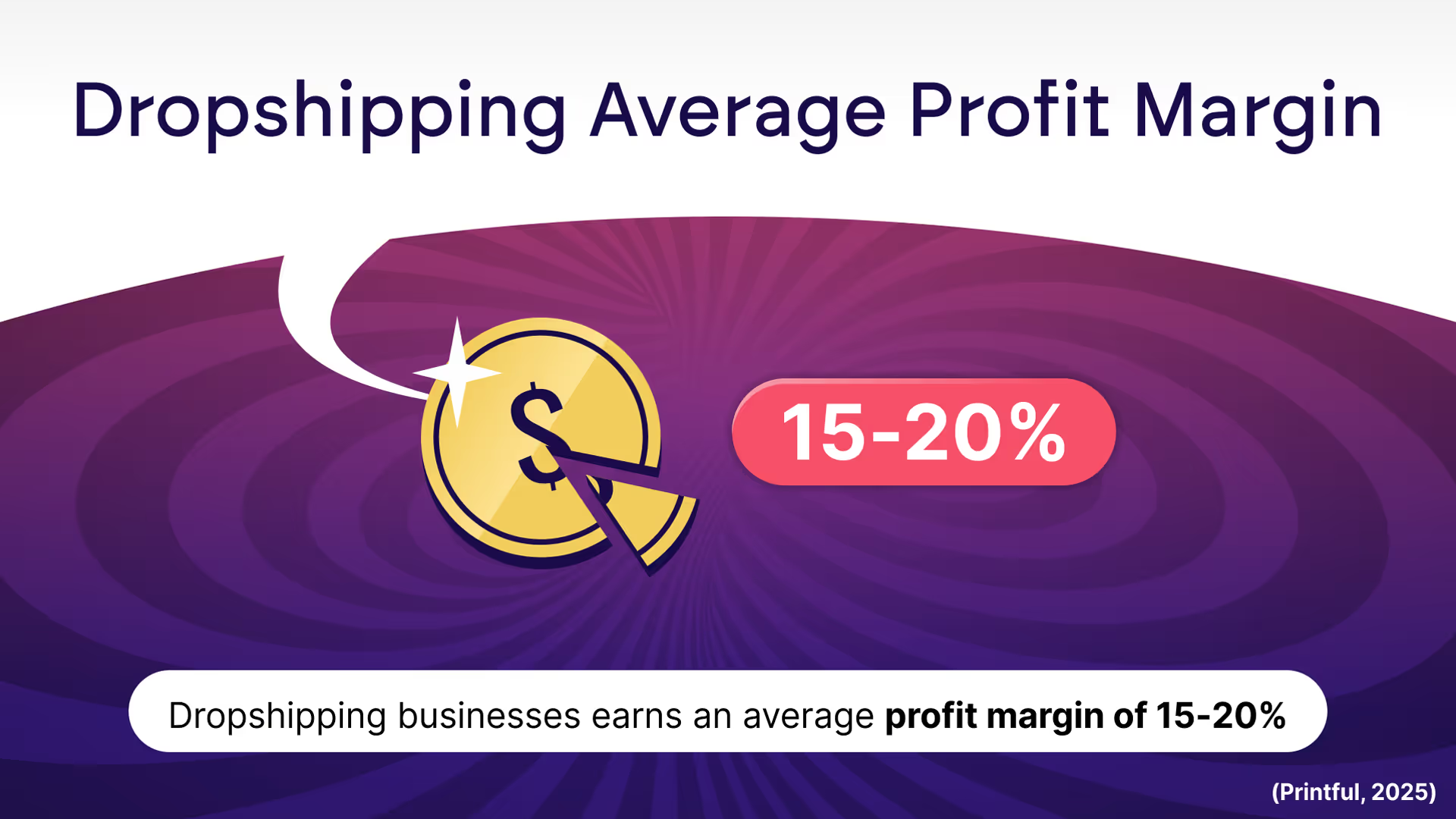
Most dropshipping niches have average profit margins of around 20%. But according to TrueProfit’s 2025 report, these margins can change depending on the type of product.
Some high-demand and premium products can earn over 30% in profit. In crowded niches like electronics, the margin is usually lower—between 10% and 15%.
Before you spend time or money, it’s important to understand how much profit your niche can make. In most cases, your profit depends on the products you choose. Picking the right items has the biggest effect on your results.
Here’s how you can boost your profit margins:
- Build good relationships with suppliers so you can get lower prices.
- Pick products that seem valuable but don’t have too much competition.
- Sell items that people can customize—this works well for print-on-demand.
- Focus on building a strong brand so you don’t have to lower your prices.
4. Fashion Dominates North American Dropshipping
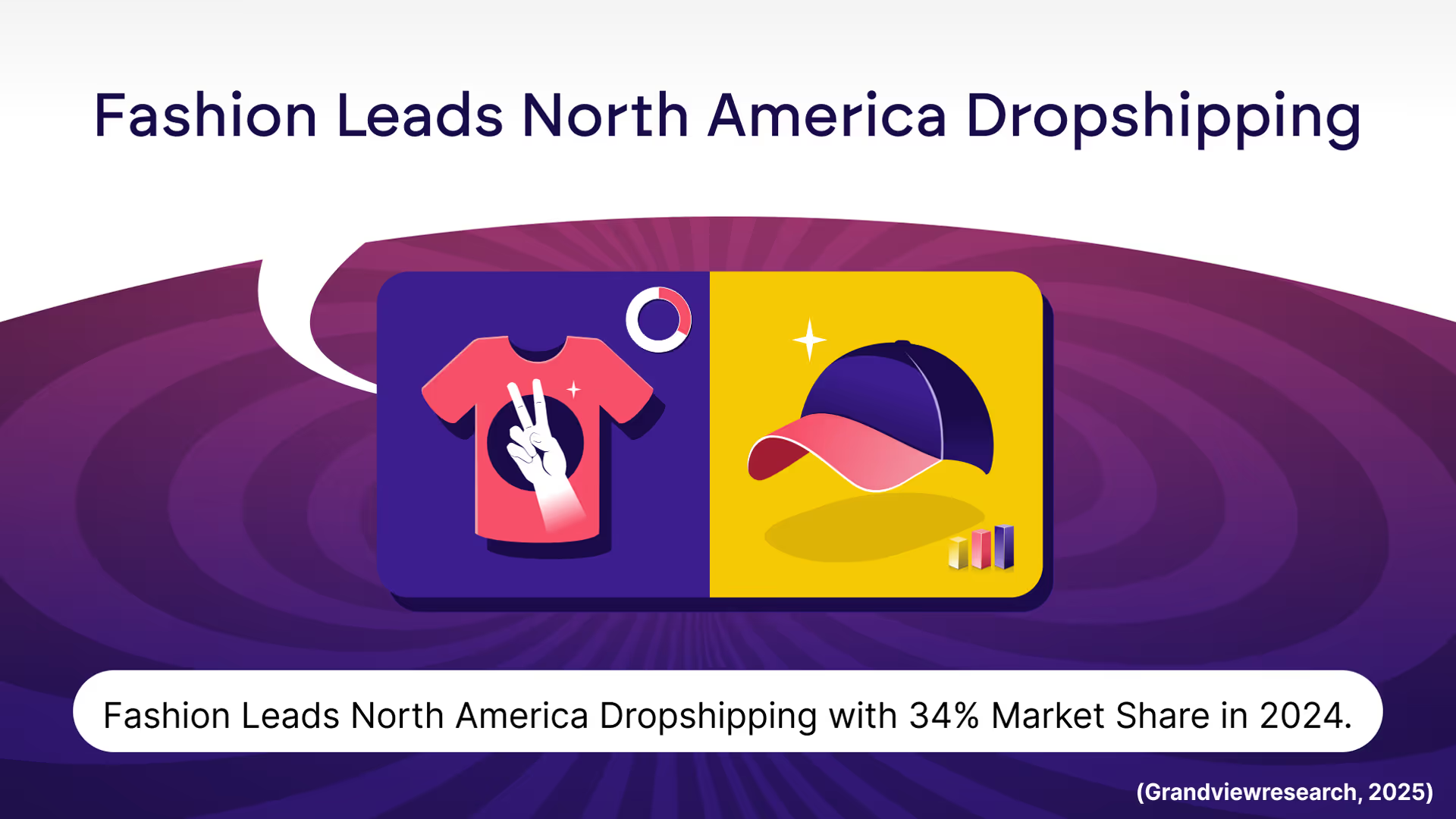
In 2024, the fashion sector made up over 34% of all dropshipping revenue in North America. That’s not surprising. Fashion trends shift fast, and dropshipping helps sellers keep up with less risk.
Stores can now test styles quickly, launch new products, and avoid leftover inventory.
What’s driving this growth? TikTok trends, influencer marketing, and shoppers who want fresh looks right away. This is especially true in print-on-demand fashion, where creators design shirts, hoodies, and hats with custom art.
And the market keeps expanding. According to Statista, global fashion revenue is expected to reach $1.18 trillion by 2029. If you’re in fashion dropshipping:
- Focus on niche styles or micro-trends
- Keep your supply chain flexible and fast
- Use trend-tracking tools to spot rising styles early
- Use AI design tools to respond quickly to style shifts
Also Read:
5. Dropshipping Success Rate
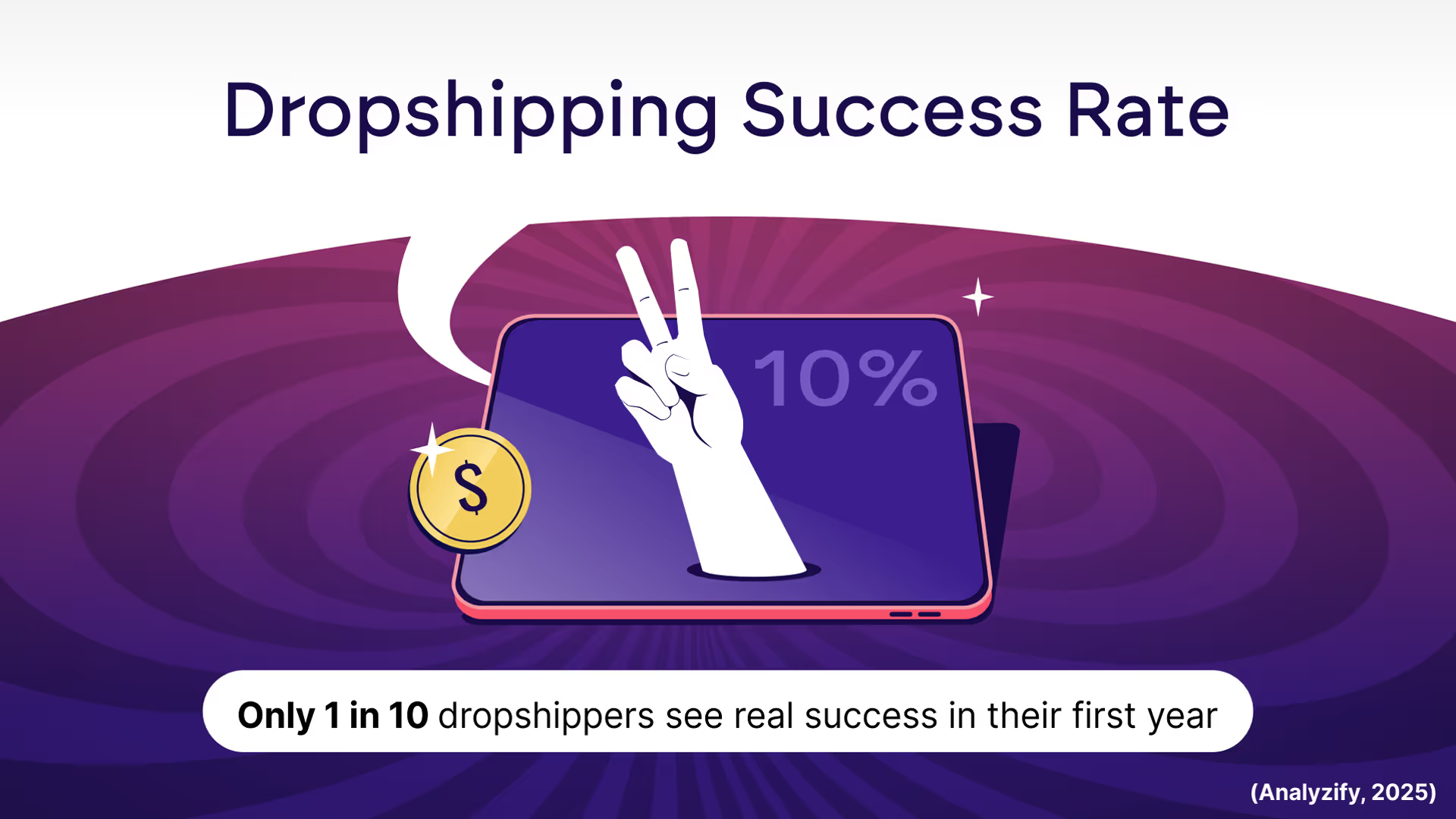
Dropshipping statistics in 2026 reveal sobering realities about business success rates.
According to the previously mentioned Analyzify reports, only one in ten dropshippers achieves real success in their first year. Even fewer hit big numbers. Just 1.5% of stores earn more than $50,000 per month.
These facts about dropshipping might sound discouraging, but they’re also a wake-up call. To succeed, you must strategize, test, and optimize. Many new sellers quit early, often due to unrealistic expectations. Improve your odds by:
- Starting with a specific, underserved niche
- Focusing on customer experience, not just products
- Building genuine relationships with reliable supplier partners
- Learning from dropshipping profitability statistics to have realistic expectations
6. AliExpress Reigns as the Top Dropshipping Platform
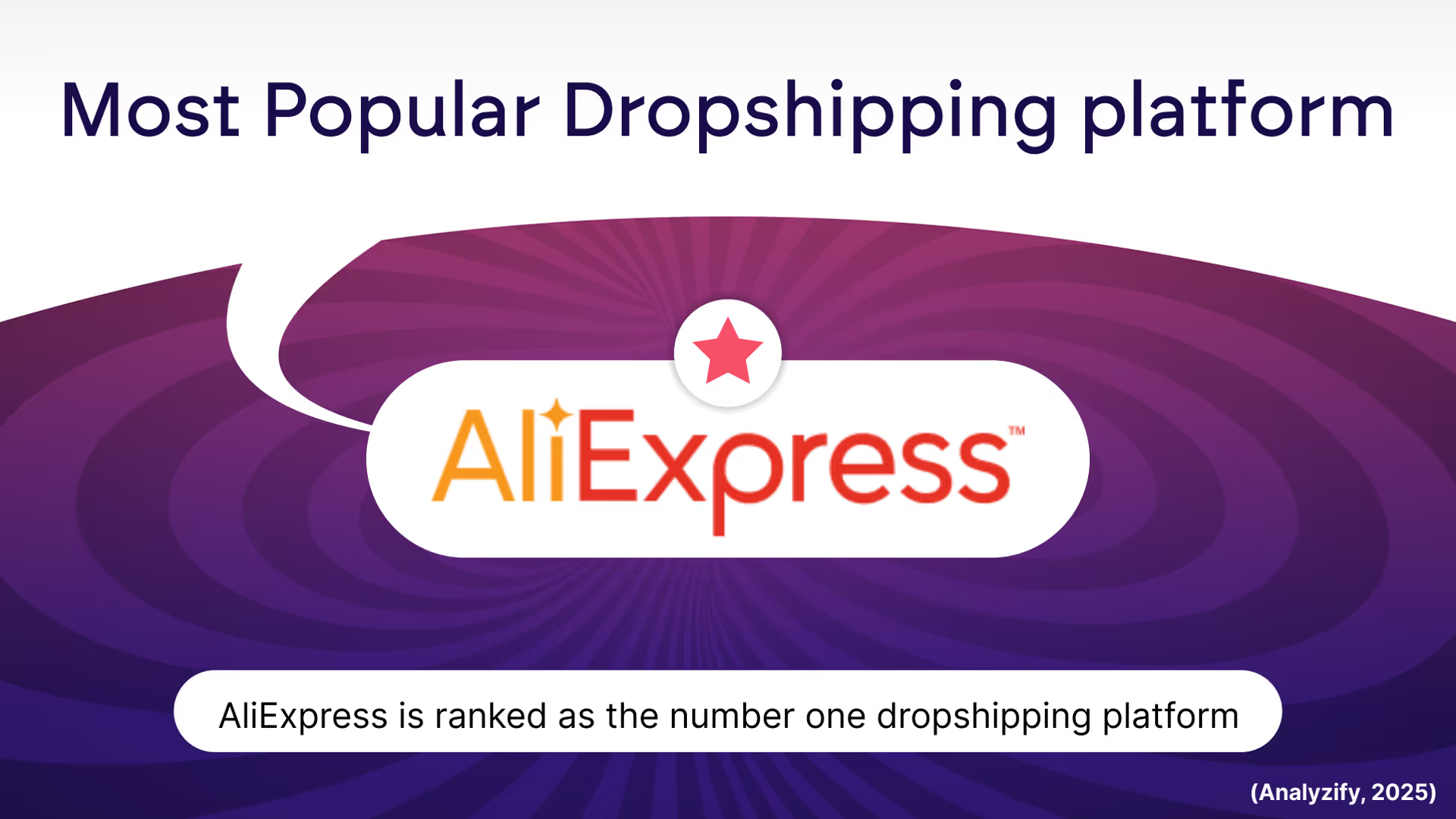
When it comes to platforms, AliExpress ranks number one among global dropshipping sellers.
It’s known for its variety and wide product range, competitive wholesale prices, and a strong supplier network. It connects with popular ecommerce platforms, like Shopify, and it’s easy to setup.
Speaking of Shopify, the number of its dropshipping stores grew from 5.16% to 12.82% according to the previously cited Analyzify report. This means more sellers are entering the space. It also means more competition.
Here’s how to stand out on popular platforms:
- Use branded packaging or personalized messages
- Choose suppliers with fast delivery and great reviews
- Have a decent product catalog size and variety for your niche
- Combine AliExpress with print-on-demand dropshipping to add a creative edge
Also Read:
7. Dropshipping in North America
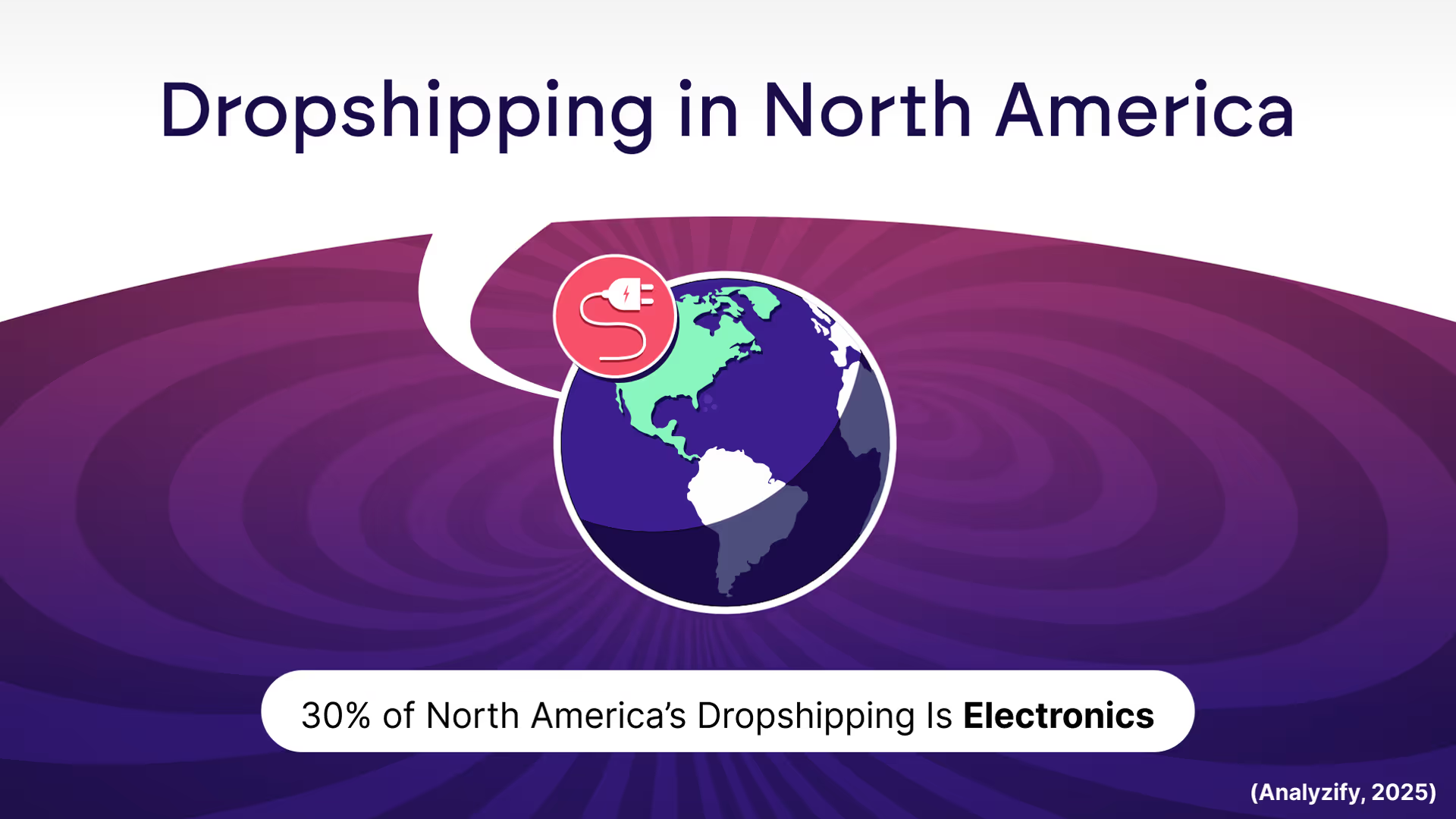
Recent dropshipping statistics show that electronics make up 30% of the North American market.
This makes them the top product category in the region. However, sellers are shifting from general stores to niche brands. Sustainable fashion, pet accessories, and health products are growing fast.
The tools are evolving, too. AI and automation are significantly shaping the U.S. dropshipping experience. It’s no wonder the U.S. market expects significant growth at a 20.2% CAGR through 2030. Here’s why:
- Predictive tools that improve demand planning
- Chatbots offering 24/7 support without hiring a team
- Growing consumer preference for curated shopping experiences
- Inventory automation for reduced stockouts and boosts profit margins
8. Asia Pacific Leads the Global Dropshipping Boom
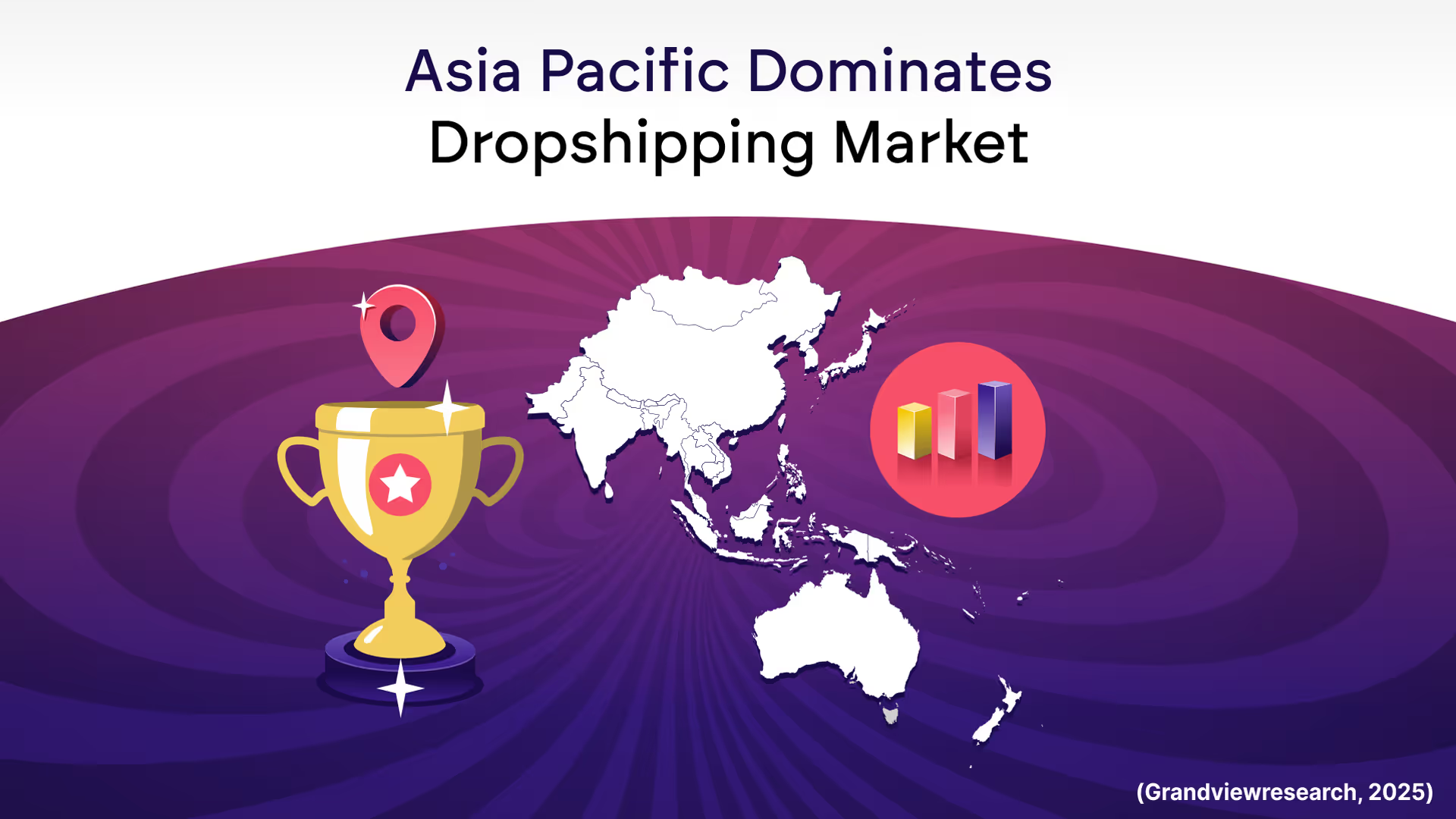
In 2024, Asia Pacific held 36% of the global dropshipping market, according to Precedence Research. Countries like China, India, Indonesia, and Japan are driving this surge.
What makes Asia Pacific (APAC) so dominant?
Ecommerce is growing fast, thanks to strong economies, mobile shopping, and digital payments. Shoppers use apps, QR codes, and mobile wallets to buy online with ease.
That’s why the APAC region has many opportunities for selling products and finding suppliers. If you’re dropshipping:
- Explore sourcing from APAC-based suppliers for faster, cheaper shipping
- Monitor APAC consumer trends — they often reach global markets next
- Adopt innovative payment solutions to simplify transactions
- Watch for growth in mobile-first shopping behaviors
9. Number Of Dropshipping Suppliers Worldwide
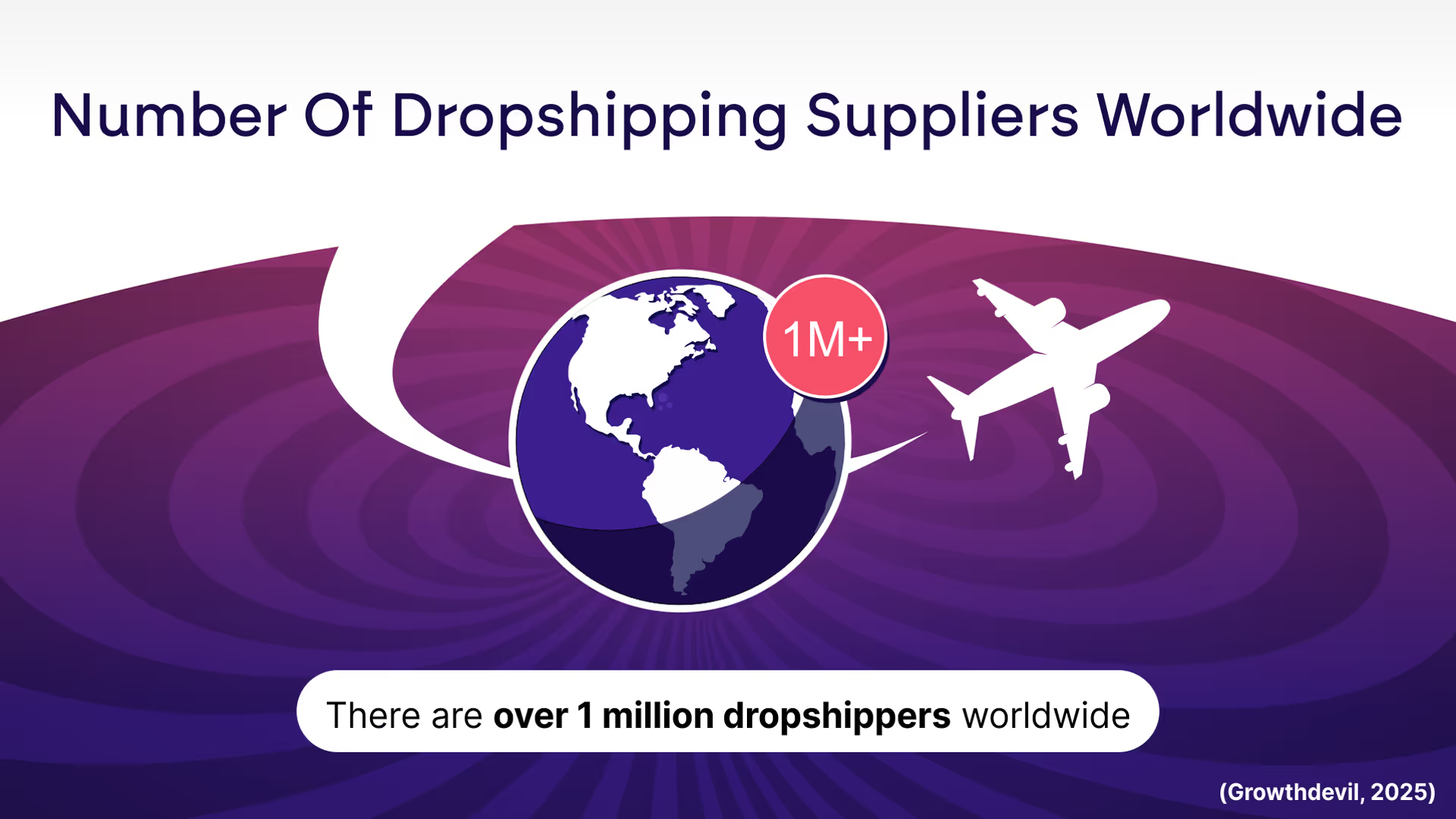
As the global dropshipping ecosystem grows, so does the supplier base. According to GrowthDevil’s 2025 insights, there are now over 1 million dropshippers worldwide.
That means more supplier options for store owners than ever before- ranging from niche print-on-demand manufacturers to general product distributors.
With more choices comes more flexibility, but also more responsibility. Success depends on picking the right partners - those who offer fast shipping, quality control, and integration with platforms like Shopify or WooCommerce.
If you’re scaling your store, prioritize suppliers that align with your brand values and customer expectations.
Ready to Launch Your Brand?
Apply these dropshipping statistics to build a smarter, profitable store with Podbase. Sell tech accessories, drinkware, or wall art - without inventory headaches or shipping delays.
Also Read:


